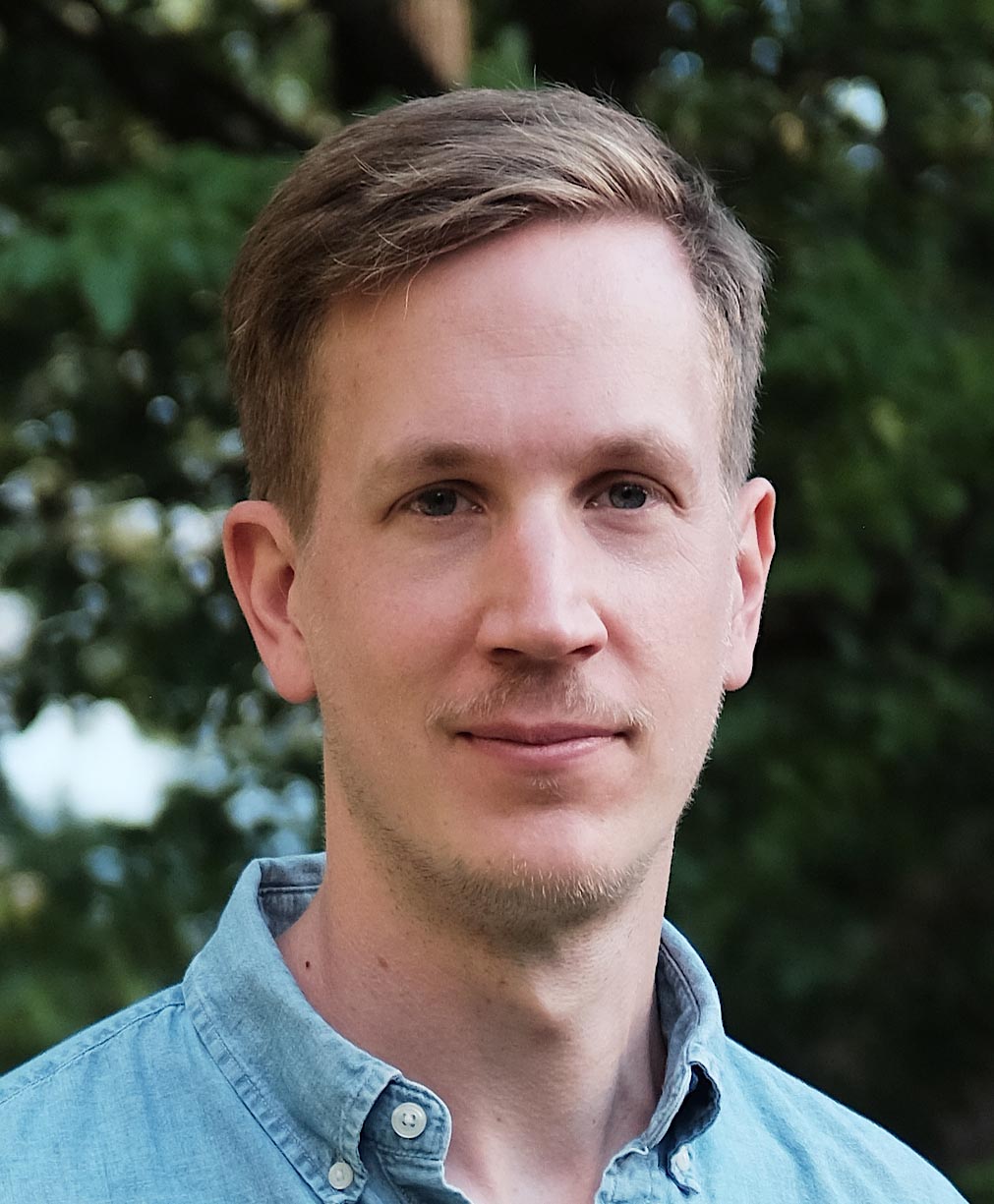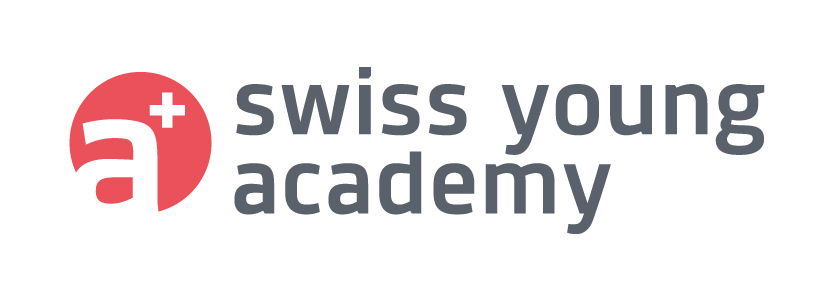Networking science.
The fake news hunter
With a PhD in plasma physics, his career path was already mapped out. But he was to take a different path, the one that leads to network science. Alexandre Bovet, Assistant Professor at the Department of Mathematics, University of Zurich, is an expert in dynamic community detection. His favourite playground? Social media and their impact on society. He joined the Swiss Young Academy in 2020. Being sensitive to inequality issues, he has joined a project focusing on precarious working conditions in the Swiss academic world.
Portrait I Kalina Anguelova

Is the information we consume true or false? Does it lead to a biased view of reality in individuals? Above all, how does it circulate? These questions fascinate Alexandre Bovet (aged 39), Assistant Professor at the Department of Mathematics, University of Zurich, who studies them from the perspective of network science. It’s a speciality to which he devotes his work, building on an original career path. He started out by studying physics, gaining a PhD on particle diffusion in turbulent plasmas at the Swiss Federal Institute of Technology, Lausanne (EPFL) in 2015, before deciding to chart a course that allowed more room for his passion for human mechanisms: “My PhD gave me a passion for research, but I wanted to broaden my horizons. I was more interested in the dissemination of information in our society than in the diffusion of particles in plasma.”
“I was more interested in the dissemination of information in our society than in the diffusion of particles in plasma.”
It was the people he met who were to put him on the right track, enabling him not to feel trapped in a single direction, and to take him to scientists working in more varied fields. Their method? Using tools developed from physics and mathematics to study the new data coming from the Internet. The idea was to model the components of a complex system and their interactions through the nodes and links of a network. Studying the patterns of connections in these networks helps one to understand better how they work. This approach can be used, for example, to analyse social media such as X (formerly Twitter) and the way in which information and misinformation spread and create opinion-shaping mechanisms.
Alexandre Bovet tried to win a postdoctoral mobility fellowship from the Swiss National Science Foundation (SNSF) to travel to the United States and study in the field of network science. “With my physicist’s profile, I was turned down.” It’s not necessarily easy to change one’s perspective in the world of science: “What’s more, there’s a paradox in universities: these institutions like interdisciplinary projects, but they have difficulty in recruiting multidisciplinary profiles. If I was able to join the department of maths at the University of Zurich today, it’s because they were looking for someone who could also work on the Digital Society Initiative, which was my case.”
“Understanding the dynamics of information dissemination on social media enables us to better detect fake news and the people behind it.”
2015 was to be a pivotal year for the scientist. An internship was finally to serve as a springboard for him: “At ETH Zurich, I was able to study the social network of a population of wild mice. I acquired enough skills in my new field to finally obtain the fellowship. As a result, I was able to join the Levich Institute at The City College of New York, where I studied information dissemination and opinion dynamics in the social media.” When he arrived in the United States, it was 2016, in the middle of the presidential campaign. In the 5 months leading up to the election, his team analysed the 171 million tweets that talked about Donald Trump and Hillary Clinton. The tweets showed that the dissemination of traditional news is due to a small group of users - mainly journalists - and follows a cascade propagation, whereas the dissemination of fake news takes place in highly-interconnected groups and is the result of a collective effort. “Understanding the dynamics of information dissemination on social media enables us to better detect fake news and the people behind it.”
His stay in New York, which he describes as an “extremely intensive experience”, was to end after a year and a half. “I wanted to return to Europe and find a slightly more acceptable rhythm.” Although a meeting with a professor prompted him to move to Brussels, at the end of 2017, it was gaining a second mobility fellowship from the SNSF that was to make his approach a reality. At the Université catholique de Louvain, he developed new network science methods for extracting a simplified description from complex temporal systems. Before returning to Switzerland, he was a postdoctoral research associate in the mathematics of social systems and applications to public policies at the Mathematical Institute of the University of Oxford. Currently at the University of Zurich, he is studying mainly the potential and dangers of using artificial intelligence to verify the credibility of sources (fact-checking), as well as the mechanisms that are leading to the growing polarisation of social media. He is also continuing to develop new mathematical methods for analysing networks and their dynamics.
“It was probably easier to study science and continue doing music on the side, rather than the other way round.”
The reason why Alexandre Bovet’s career is wide-ranging may also be because it is rooted in family resources. A love of science was passed on to him by his uncle, a plasma physics specialist. “But it was my parents’ unconditional support that encouraged me to enrol in physics at EPFL.” And, he admits: “It wasn’t necessarily what interested me most, but it was the field which I found to be easiest.” For a while, he hesitated between studying music – drumming – and physics. “It was probably easier to study science and continue doing music on the side, rather than the other way round.”
What does he like today at the Swiss Young Academy? “I like this idea of being able to take part in projects that focus on the world of science.” Being sensitive to inequality issues, in 2020 he joined a project focusing on inequalities and precarious working conditions in the academic world. The aim is to improve university culture. “We are aware mainly of gender inequalities. But there are other forms of inequality about which very little is said in the Swiss academic world, such as those related to socio-economic background or racism.” Next year, the researcher wants to embark on another project, whose aim will be to create a podcast designed to connect with a young audience and encourage them to think about topics related to current societal challenges, taking into account the perspectives of science and society. “If I’d had more information and a better understanding of what I was really interested in, I would probably have moved more quickly towards a PhD that was in my current field. Hence, the importance of communicating well about science.”
Biography
(Since 2022) Assistant Professor in Quantitative Network Science at the Department of Mathematics, University of Zurich
(2022) Member of the Digital Society Initiative
(2021) Best program committee member award of the International Conference on Web and Social Media (ICWSM)
(2020 - 2022) Post-doc at the Oxford University, in mathematics of social systems and applications to public policy
(2017 - 2020) Post-doc at the Université catholique de Louvain and at the Namur Center for Complex Systems/Mathematical Institute of the University of Oxford, work on temporal networks
(2016 - 2017) Post-doc at the City College of New York, United States, study of information dissemination and opinion dynamics in the social media
(2015 - 2016) Post-doc at the Swiss Federal Institute of Technology, Zurich (ETHZ), study of the social organization of a population of wild mice (including the spread of diseases)
(2015) PhD in Physics on particle transport in turbulent plasmas, at the Swiss Federal Institute of Technology, Lausanne (EPFL)
Swiss Young Academy
House of Academies
Laupenstrasse 7
P.O. Box
3001 Bern
Switzerland
